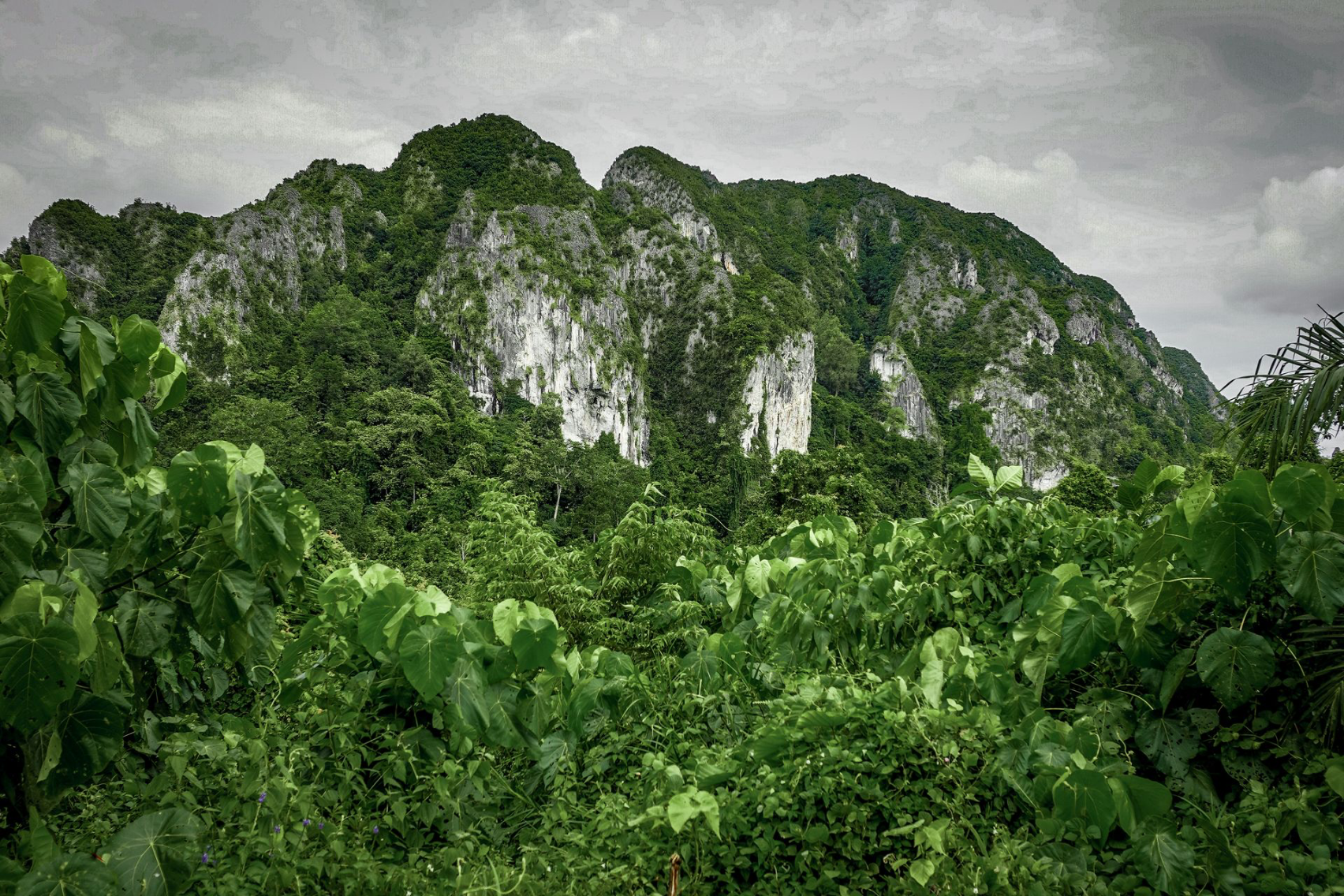Gunung Karst Kombeng: Guardians of The Karst

Gunung Karst Kombeng is a dramatic limestone mountain range located in East Kutai, East Kalimantan. It forms part of the larger tropical karst ecosystem of Sangkulirang Mangkalihat, which spans approximately 1.8 million hectares. Composed of 60 million year old limestone, this ancient formation features cone-shaped hills, steep cliffs, vast caves, and underground rivers, an ecosystem as breathtaking as it is vital.
A Landscape Shaped by Time and Water
Karst landscapes form slowly over millions of years, as soluble rocks like limestone dissolve, giving rise to unique features: sharp ridges, sinkholes, underground rivers, and deep caves. These natural systems are not just visually striking, they are ecologically essential. Acting like massive natural sponges, they absorb rainwater and feed clean rivers, making them crucial for regional freshwater supply, climate regulation, and biodiversity.
Geologically, Gunung Karst Kombeng plays a central role in East Kalimantan’s environmental health. It serves as the source of five major rivers, sustaining forests, wildlife habitats, and numerous downstream communities. Within its caves and forests live hundreds of species, some of them endemic, including the Sarax cavernicola, a cave-dwelling arachnid; Nemacheilus marang, a rare fish species; and of course, the elusive orangutan.
Caves That Tell Human Stories
The karst hills hide a network of at least 147 documented caves, many of which are rich with archaeological remains, including prehistoric rock art, pottery shards, stone tools, and other traces of human life dating back over 10,000 years. These caves offer rare insight into early human settlement and spirituality.
Among them, Gua Tewet is perhaps the most iconic. It features vivid red ochre hand stencils and abstract symbols believed to represent family ties, identity, and spiritual beliefs. Nearby caves like Gua Beloyot and Gua Ampanas contain wide chambers with signs of daily life, such as ancient hearths and food remains, helping us understand how early humans lived, survived, and formed spiritual relationships with their surroundings.
Many of these caves were also used ritually. Evidence suggests that they were not merely shelters, but sacred spaces, places for burials, prayers, or ancestral worship, still remembered in the oral traditions of the local Dayak communities.
A Living Spiritual and Cultural Landscape
To the Dayak communities and other residents of East Kutai, the caves and forests of Gunung Karst Kombeng are living landscapes. They are sacred sites, still visited for ceremonies and treated with reverence. Local beliefs hold that ancestral spirits dwell within the caves, and certain trees, cliffs, and rivers are imbued with spiritual significance.
This intimate relationship gives Gunung Karst Kombeng its unique character. Here, nature, history, and culture are not separate but deeply intertwined. The mountain is a spiritual map, with each element from river to rock painting, carrying memory and meaning. Elders pass down stories linking caves to mythology, clan origins, and sacred traditions. Conservation, therefore, is not just about preserving rocks and fossils, it is about protecting a living heritage.
Science, Spirit, and Stewardship
Gunung Karst Kombeng is a rare place where scientific knowledge meets spiritual wisdom. It is both a living museum and a sacred sanctuary. Every cave mouth, spring, and forest path serves as a keeper of memory holding lessons about adaptation, belief, and balance.
In today’s world, where natural spaces are often exploited or forgotten, Kombeng reminds us of a different way of relating to land: one rooted in respect, storytelling, and coexistence. It’s a place that teaches not only through data and discovery, but through rituals, silence, and awe.
Threats and the Urgency of Conservation
Despite its ecological and cultural value, Gunung Karst Kombeng is under threat particularly from limestone mining. Although 430,000 hectares have been declared protected, ongoing efforts are needed to safeguard the remaining karst landscapes.
Community-based ecotourism, public education, reforestation, and cultural advocacy are key strategies being employed. Protecting this area means protecting not just geological formations, but clean water sources, rare species, sacred stories, and the rights of Indigenous communities who have long coexisted with this land.
The Journey
The journey to Gunung Karst Kombeng begins in Sangatta, followed by a 4–5 hour drive eastward to Kongbeng District. From there, the path becomes more rugged, continuing via unpaved roads, forested trails, and sometimes short treks requiring the guidance of locals.
Importantly, there are no public buses or commercial transport services to this remote area. Visitors must travel by private car, often in collaboration with community guides who know the terrain. This makes every trip a conscious commitment, adding to its meaning and spiritual weight.
This is not a casual sightseeing stop. It is an immersion into deep time, deep ecology, and deep culture. Let the land guide your steps. Let the caves speak their truths. And let your journey become part of the growing movement to protect and honor this rare and precious place.